亚利桑那州立大学生物设计研究院
Arizona State University, Biodesign Institute C / ZGF Architects
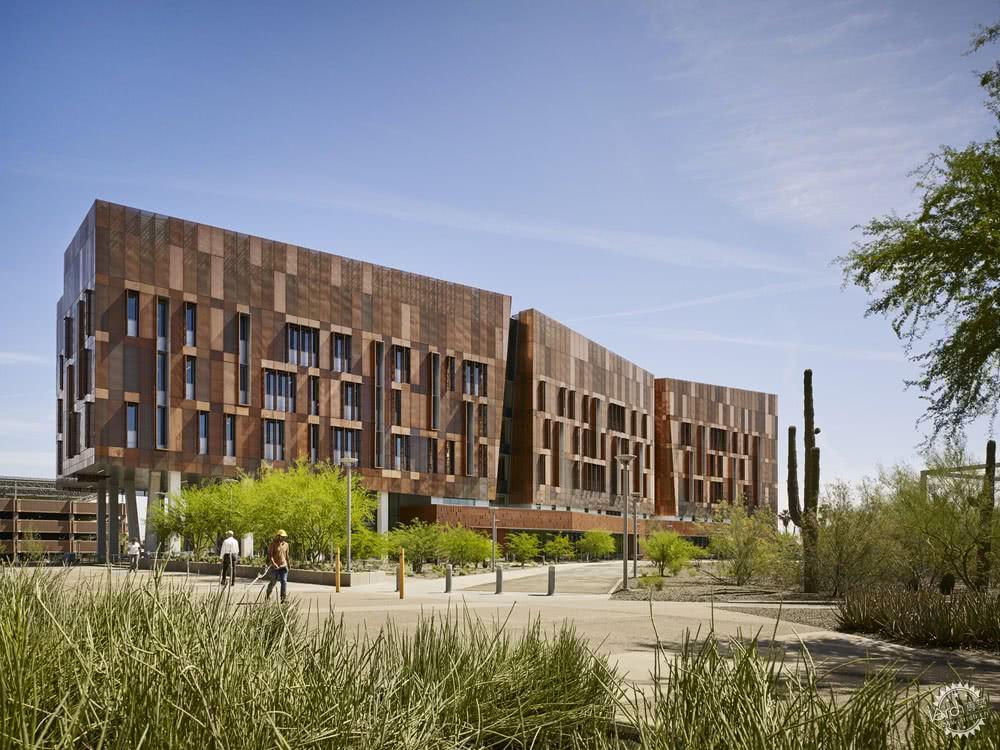
来自建筑事务所的描述:该项目面积为188447平方英尺(约17507平方米),具有校园的标志性特征,使用者希望能够建造一座可持续的实验建筑。建筑地上五层,地下一层,容纳有各个学科的实验与工作室,这使得建筑兼具多重功能,例如高海湾空间、高罩密度实验室,另外还有三个级别的科学实验室。整体的定制设计方案强调了地下层,其中设置有世界上第一个紧密型X光自由电子激光器。
Text description provided by the architects. The 188,447 SF research facility was intended to establish an identity as a striking campus gateway, while also delivering on the client’s need for a sustainable “workhorse” laboratory building. The building’s five above-grade levels and basement will house various scientific disciplines that will utilize the building’s mixture of laboratories, which includes high bay space, high hood-density laboratories, and three levels of generic life sciences laboratories. The custom-designed, heavily reinforced basement level will house the world’s first compact X-ray free-electron laser.

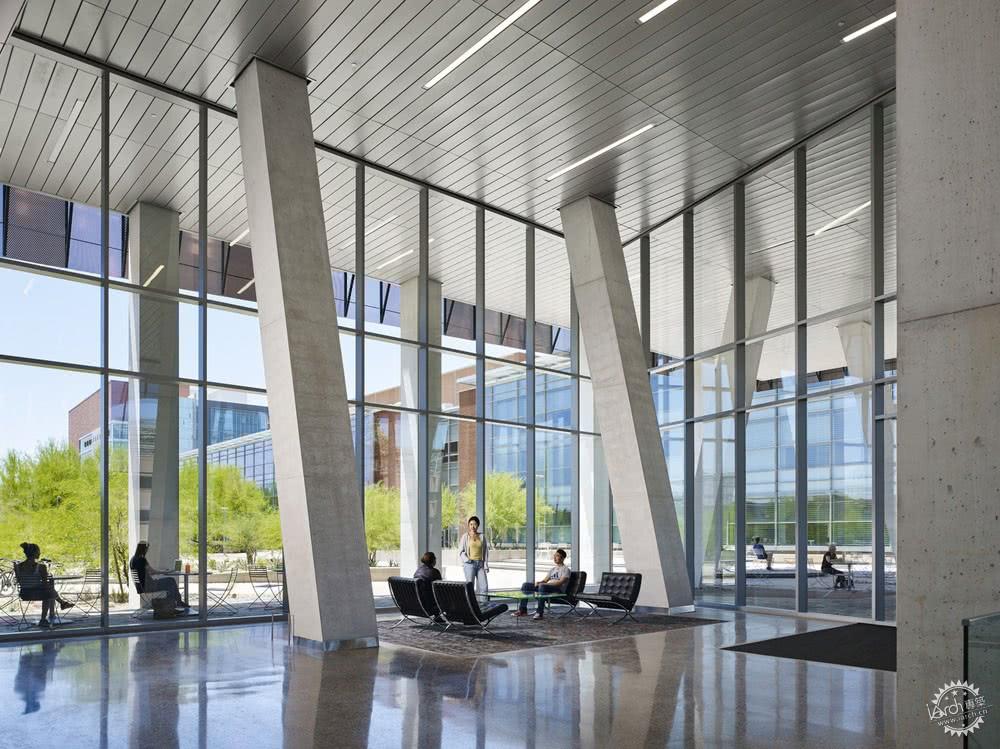
这座建筑的主要形式通过三个研究“社区”空间来表达,其中包含有各个楼层平面图。在以James Turrell装置为中心的北侧边缘是研究场所,三个建筑空间则位于装置周围,以遮挡视线。建筑独特的铜色外部形态表达了亚利桑那州的历史,即“Five Cs”,这推动了当地早期的经济发展,另外,特殊的红色也结合了校园的建筑特征。
The building’s primary form is an expression of the three research “neighborhoods” that comprise each floor plan. Forming the northern edge of a research quadrangle centered on a James Turrell installation, the three building segments have been strategically positioned to protect the view from within the installation. The distinctive copper exterior is a nod to Arizona’s roots (copper being one of Arizona’s historic “Five Cs” that drove the state’s early economy) and a unique expression of the reddish hue that permeates the campus architecture.
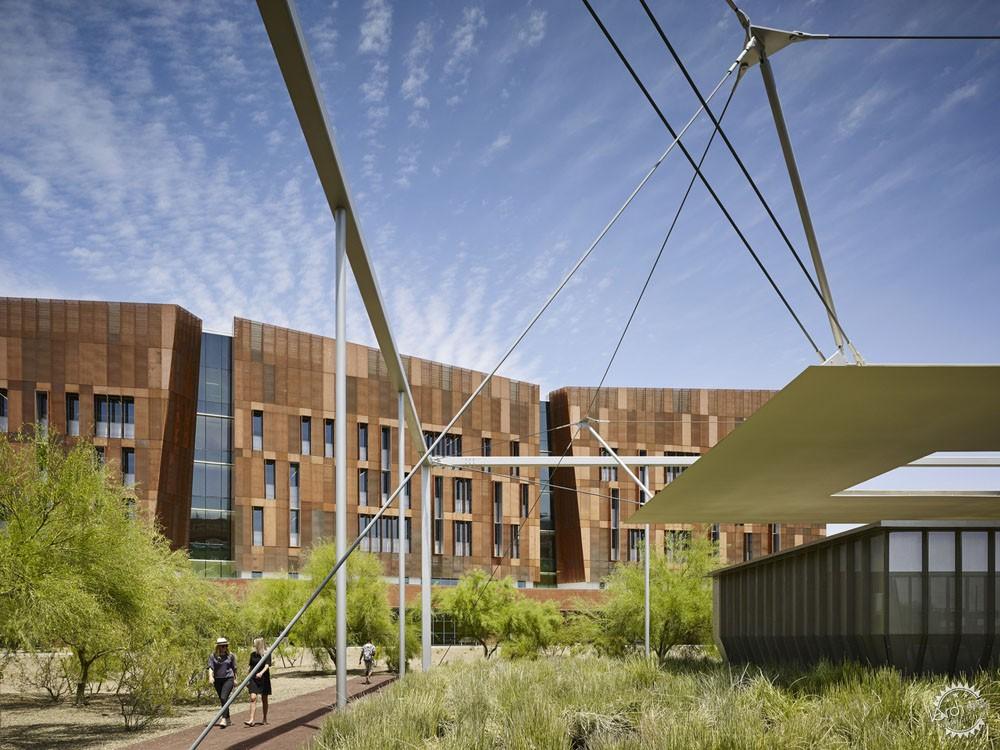

生物设计研究院获得了LEED白金认证,并且相比起现有的校园实验室,这座建筑能够节省44%的能耗,同时其目的也是成为校园内最具节能特色的实验场所。这座建筑有着平衡性能、美学基础,独特的外部铜丝网格系统构成了建筑的主要表皮,从而形成了高性能的双层立面,该体系由成千上万的铜制面板组成,并且有着8个不同程度的穿孔。建筑师根据场地的微气候特征和立面特定条件来进行穿孔定位,从而减小太阳热量的扩散,优化采光与视觉舒适度,并且扩大了景观视野。
Designed to achieve LEED Platinum, with an energy savings goal of 44% compared to existing campus laboratories, Biodesign C is intended to be the most energy efficient lab on campus. Balancing performance, aesthetics, and budget, the distinctive outer copper screen wraps around a primary skin of insulated metal panels to create a high-performance dual façade. Comprised of thousands of copper panels, the screen features eight different levels of perforation. Intensive studies of the site’s micro-climate and façade-specific conditions informed their calibration and positioning to minimize solar heat gain, optimize daylighting and visual comfort, and provide unobstructed views out.

立面体系也有遮阳的功能,在夏天,该体系能够使建筑表面的温度下降许多,同时还能显著降低空间周边的温度。
As a shading device, the screen reduces the surface temperature of the inner façade by roughly 65 degrees on hot summer days, significantly reducing the cooling load on perimeter spaces.


建筑的广场结合了形式和功能,这也成为了建筑的基础部分,并且形成了休息区和交往场所。由于三层的实验室位于这样的空间之上,因此需要厚重的混凝土剪力墙。但是,建筑师通过设计的方式,结合结构特征,采用了一系列倾斜或垂直的支柱,构成了空间的支撑体系,因为虽然设计方法优雅且创新,但是有的柱子具有角度,有的又垂直放置,甚至有的还有三层楼的高度,所以这其中也充满了独特的挑战。同时多次大规模的模拟实验也大大促进了项目的具体实施。
Further combining form and function, a plaza has been carved out of the building’s base, which allows for al fresco breaks and meetings, despite the desert heat. Three levels of labs located directly above such a space would typically require heavy concrete shear walls. However, melding design excellence and structural integrity, a series of sloped and vertical columns was devised to provide lateral bracing. While an elegant and innovative design solution, it posed a unique challenge—some columns are angled, some upright, and one is three stories tall. Multiple large-scale mockups helped perfect the mix and formwork for each condition.
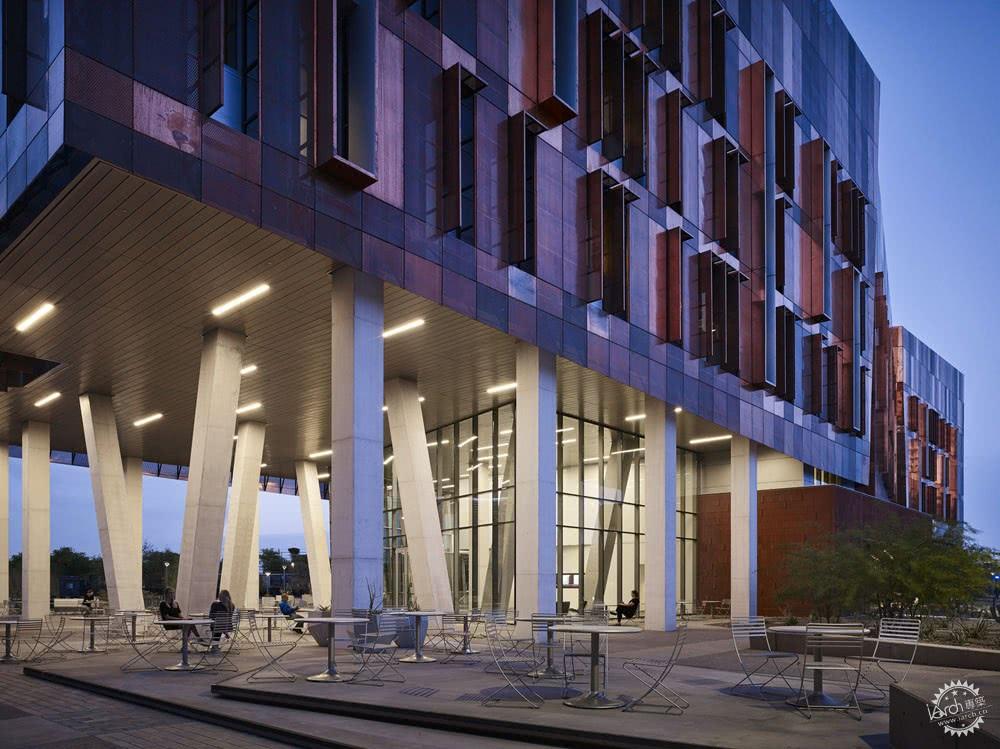

建筑生态设计元素的目的是构成积极且高效的室内环境,同时保持自然与建筑的联系。建筑的窗墙比为35%,确保了室内有着充足的日光照明。窗户和玻璃大厅使得使用者能够直接欣赏到校园景观。玻璃大门也将地面层和室外空间无缝地连接起来。未经处理的铜制立面具有渐变的色彩,这模仿了沙漠中不规则且不断变换的肌理特征。
The building’s biophilic design elements are intended to foster a positive, productive indoor environment, while maintaining connection with nature and community. A 35% window-to-wall ratio and transparent layering of spaces ensures daylight floods above-grade interiors. Abundant windows and the glass-enclosed lobby overlook active campus thoroughfares and a grove of vibrant palo verdes. Glass hangar doors seamlessly connect ground-floor maker spaces with the grove. The untreated copper façade will patina gradually, emulating the irregular, ever-evolving colors and textures of the desert.

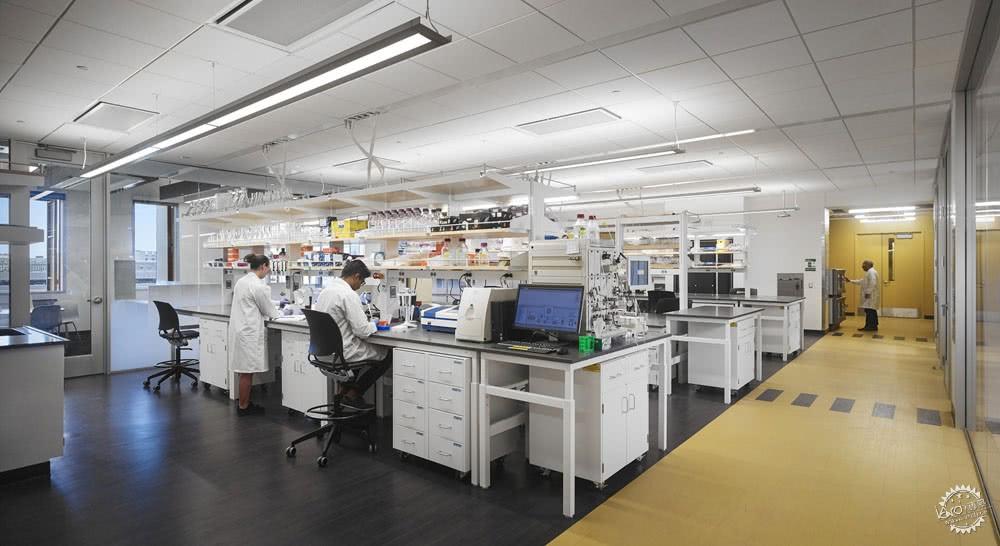

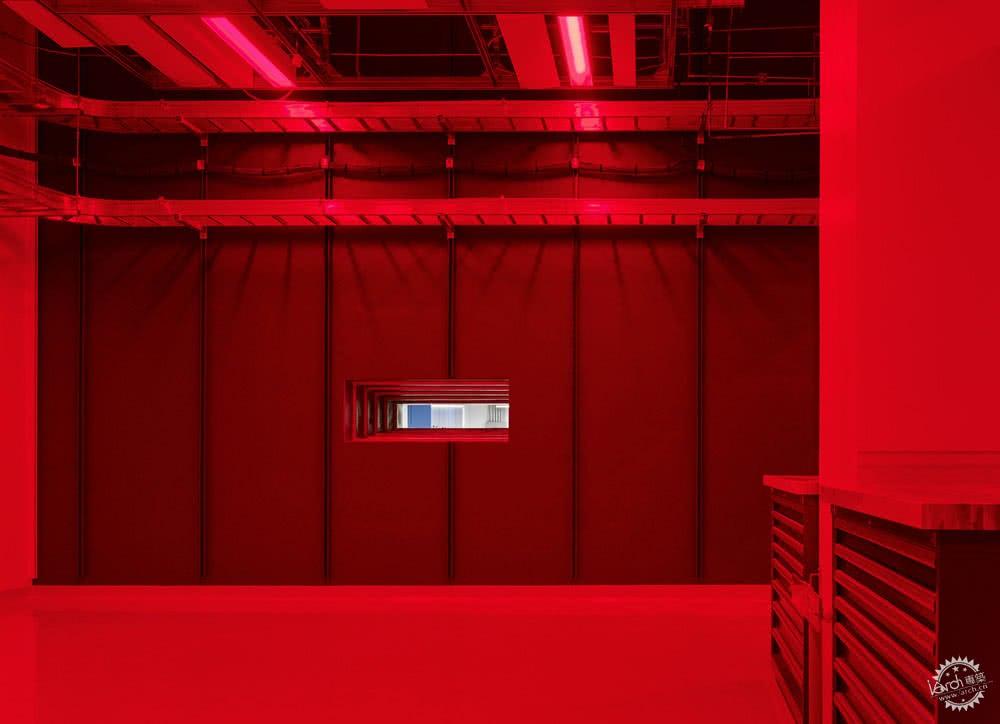

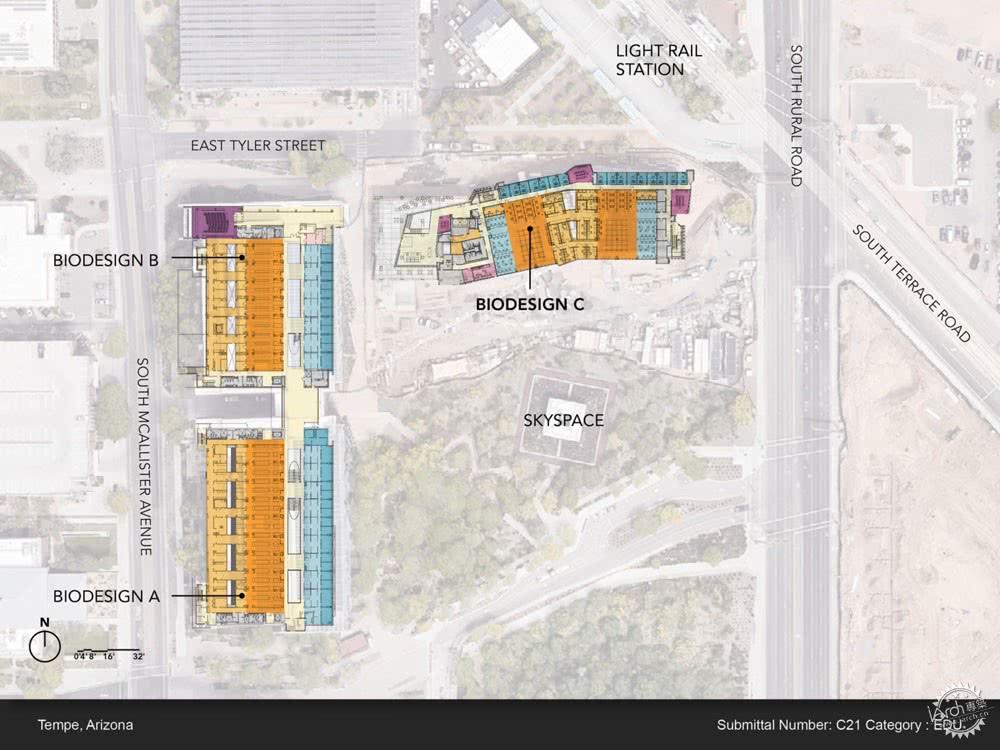
建筑设计:ZGF Architects
地点:美国,亚利桑那州
主创建筑师:ZGF
面积:188447.0 平方英尺(约17507平方米)
项目时间:2018年
摄影:Nick Merrick Hall+Merrick
制造商:Kingspan, Renlita USA
联合建筑设计:BWS Architects
总承包商:McCarthy Building Companies
结构工程:KPFF
土木工程:Dibble & Associates
MEP:AEI
景观设计:TrueForm
实验室规划:Jacobs Consultancy
造价估算:Capital Projects Group
声学顾问:Colin Gordon Associates
EMI 顾问:VitaTech Electromagnetics
联合结构工程设计:Advanced Structural Engineering
客户:Arizona State University